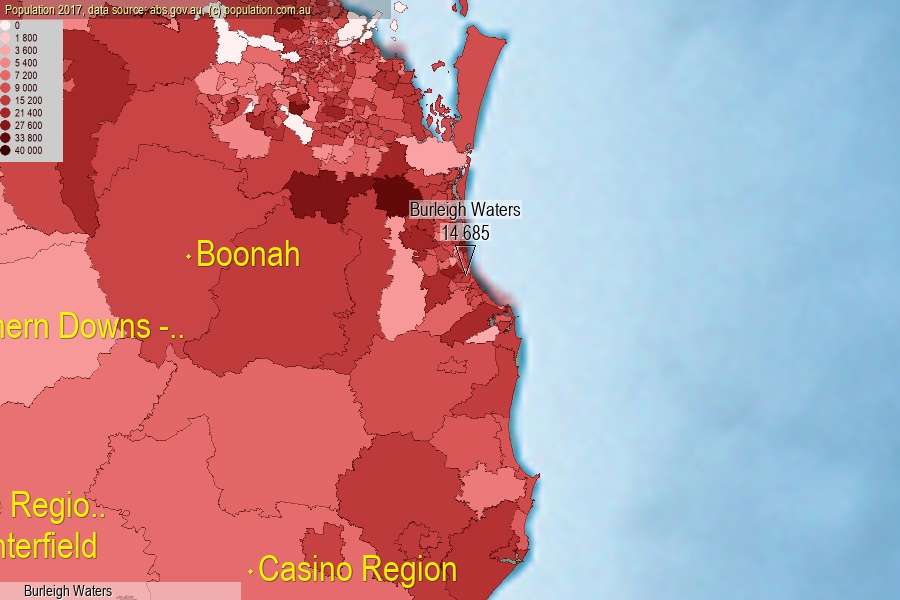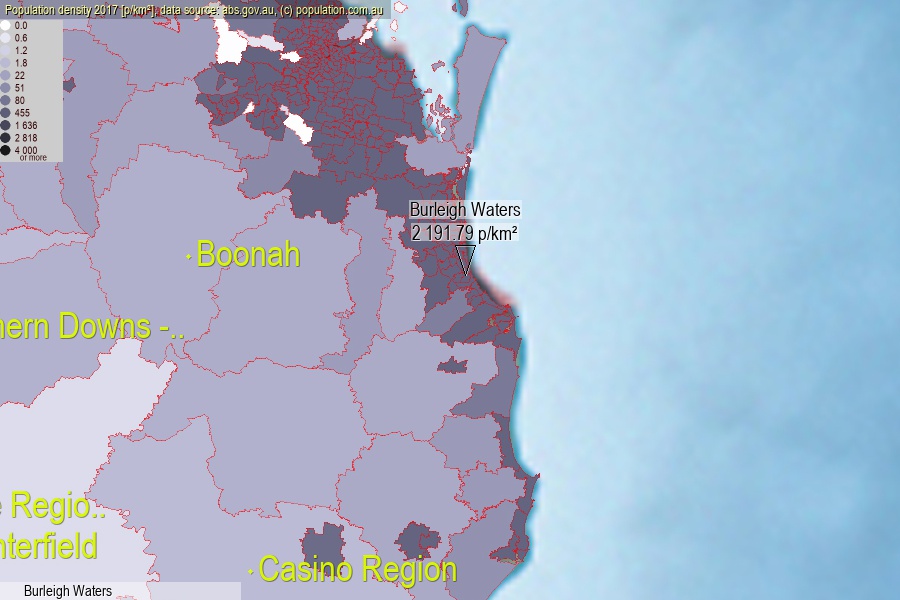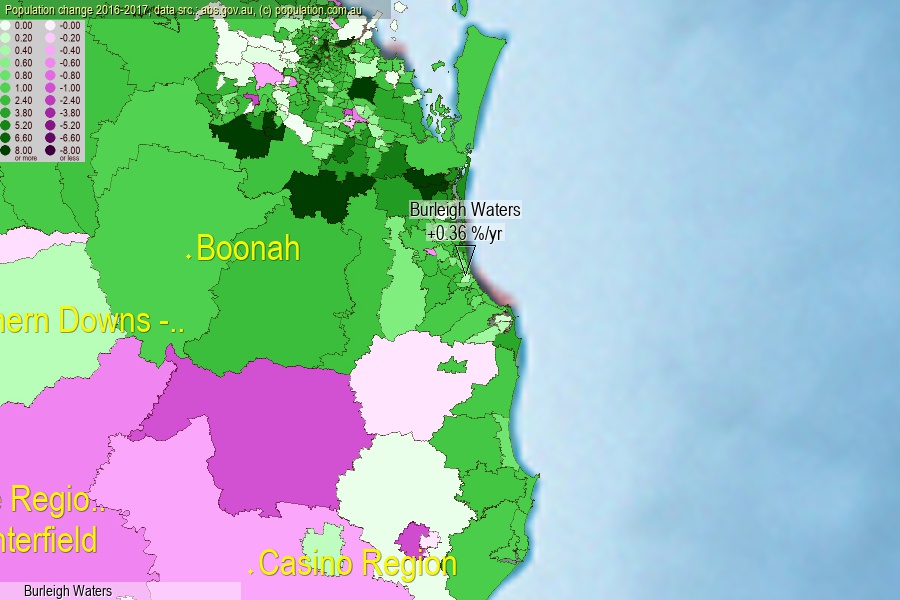 population.com.au
population.com.auLast official estimated population of Burleigh Waters (as Statistical Area Level 2) was 14 685 people (on 2017-06-30)[2]. This was 0.06% of total Australian population and 0.294% of QLD population. Area of Burleigh Waters is 6.70 km², in this year population density was 2 191.79 p/km² . If population growth rate would be same as in period 2016-2017 (+0.36%/yr), Burleigh Waters population in 2025 would be 15 116. [0]



Click to enlarge. Burleigh Waters is located in the center of the images.
Population [people], population density [p./km²] and population change [%/year] [2]
View borders » (new window) [4]
[1991-1992] +4.60 %/Yr.
[1992-1993] +6.06 %/Yr.
[1993-1994] +3.55 %/Yr.
[1994-1995] +2.91 %/Yr.
[1995-1996] +2.08 %/Yr.
[1996-1997] +6.86 %/Yr.
[1997-1998] +2.47 %/Yr.
[1998-1999] +3.77 %/Yr.
[1999-2000] +3.49 %/Yr.
[2000-2001] +4.91 %/Yr.
[2001-2002] +1.71 %/Yr.
[2002-2003] +0.02 %/Yr.
[2003-2004] -0.08 %/Yr.
[2004-2005] -0.53 %/Yr.
[2005-2006] +0.21 %/Yr.
[2006-2007] +2.19 %/Yr.
[2007-2008] +1.13 %/Yr.
[2008-2009] +2.79 %/Yr.
[2009-2010] +2.14 %/Yr.
[2010-2011] +1.70 %/Yr.
[2011-2012] +0.42 %/Yr.
[2012-2013] +0.23 %/Yr.
[2013-2014] -0.03 %/Yr.
[2014-2015] -0.11 %/Yr.
[2015-2016] +0.33 %/Yr.
[2016-2017] +0.36 %/Yr.
[0] Calculated with linear interpolation from officially estimated population
[1] Read more about SA2 and Australian Statistical Geography Standard (ASGS) on abs.gov.au
[2] Population data from Australian Bureau of Statistics (Population and density: 2017; change: 2016-2017)
[3] Digital Boundaries: Australian Statistical Geography Standard (ASGS) 2016.
[4] Border coordinates are simplifyed using Ramer-Douglas-Peucker algorithm.